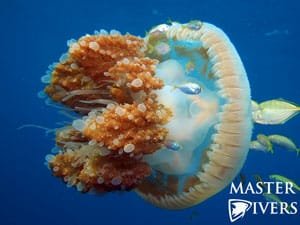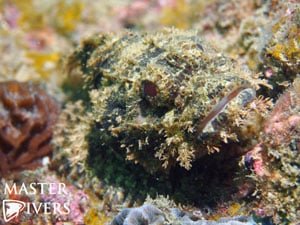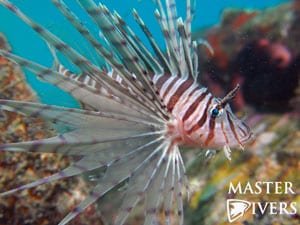The underwater world is a beautiful place, a whole new world to explore, just as there is on land though there are still potential hazards to look out for, this is why buoyancy control and trim is so important. Even though we put all the efforts in place to avoid injury accidents do still happen so its important to know what to do if a situation arises, here are some ‘how to steps’ on what to do with different aquatic injuries:
These steps are the primary care steps one should take, its important to always seek medical care as soon as possible with all types of aquatic injury the Emergency Responder should monitor the patients condition continually for any changes and make a note of them for when Emergency Medical Services (EMS) arrive.
Jellyfish Stings:
Jellyfish stings vary in severity depending on the species of Jellyfish and where the sting is located on the body. DAN recommends the first step in this situation is to irrigate the affected area with household vinegar this is to stop any further to toxins being discharged. The next important step is to apply barriers before touching the injured areas as you don’t want to harm yourself, when properly protected either use tweezers or if you have none carefully pick off any tentacles with your gloved fingers, whatever has been used to remove the tentacles should be treated with caution and washed or replaced with new gloves to stop any remaining toxins coming in contact with other people, the patient or the emergency responder. Once the area has been cleared of tentacles and thoroughly washed out with vinegar rinse the area with either Saline solution or seawater, pass on the notes to a medical professional so they can continue to monitor the patients condition once EMS has arrived.

One thing to note is that for potential Portugese Man Of War stings the use of vinegar is not advised, see what DAN has to say on the topic here.
Coral Injuries:
Coral cuts and scrapes are not uncommon in the diving and snorkeling world. Unlike other cuts and grazes coral cuts take a while to heal and are prone to itchiness, redness and infection. If there are any coral fragments in the wound remove them carefully and rinse out with fresh water and antibacterial soap, once clean apply a dressing to protect the area from any further infections and be sure to put a fresh dressing on at least once a day. Coral cuts usually take a lot longer to heal than normal cuts and scrapes so it is important to keep it clean and look after it properly.
Lionfish, Scorpionfish & Stonefish:
These three fishies are extremely beautiful and interesting to watch however they are also the three of the most venomous creatures of the sea as well, especially the Stonefish. If a sting from one of these fish is suspected emergency services should be alerted immediately. The treatment for all three stings is the same; soak the wounded area in hot water, as hot as the patient can tolerate. For a Lionfish sting it may reduce the pain by a significant amount but with Scorpion or Stonefish it may not make much of a difference but it is still recommended. As mentioned previously make sure emergency services is alerted as soon as possible and monitor the patients condition very carefully whilst noting everything down to pass onto medical professionals.



